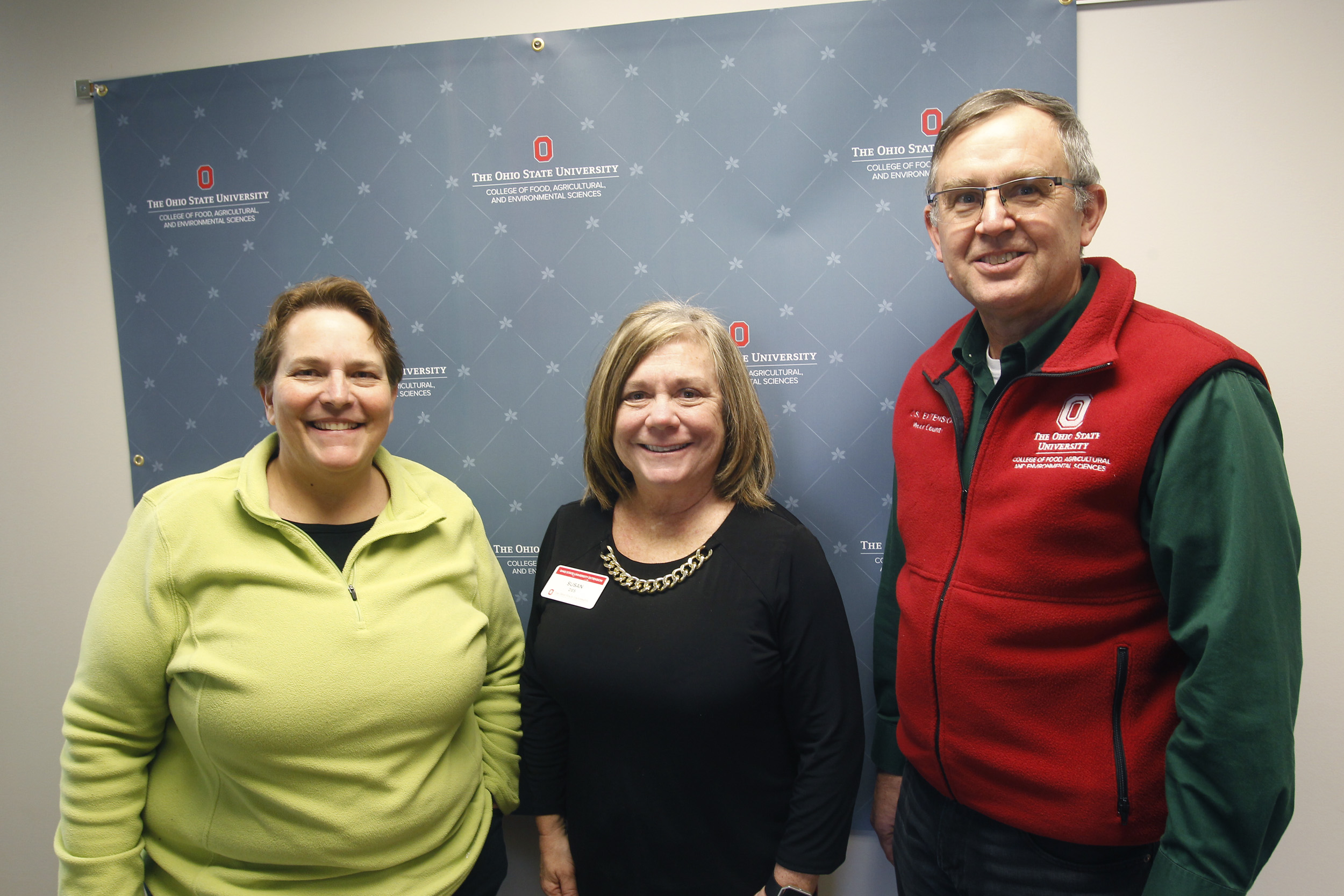
The 1914 Smith-Lever Act likely means little or nothing to most people. However, that congressional piece
of legislation was what allowed for the formation of what locally is the Ohio State University Extension
Office. Some state records show its roots go back as far as 1905.
The first Wood County extension agent was appointed on July 1, 1917. The office is this year celebrating
its 100th anniversary.
The local office has three primary departments led by Alan Sundermeier, the county extension agent, with
a focus on agriculture and natural resources. He has served the county since Jan. 1, 2002. Jayne Roth is
the extension agent for 4-H and youth development. She has served locally since July 1, 1985. Susan Zies
joined the local staff on Jan. 1, 2012. Zies is the extension agent for Family and Consumer Sciences.
She has nearly 30 years overall experience with the extension.
Sundermeier said their office at some point in time connects to “almost every aspect of a person’s life.”
The overall OSU Extension mission reads, “Engaging people to strengthen their lives and communities
through research-based educational programming.”
As one might expect in an educational environment, things are always changing and progressing; however,
Roth said, “Part of what we do is still the same. Yes, we now have STEM 4-H projects, but we still have
the clothing, nutrition and livestock projects.”
“Things have changed but it has also not changed. We still reach out and touch people personally and that
is important for us,” she said.
Both she and Sundermeier said the social aspect of what they do is important for them as well as those
they serve.
For example the ServSafe program operated by Zies can be done online; however most people prefer to come
in for the educational opportunity, which is taught at the extension’s Dunbridge Road site. ServSafe is
a certification program regarding safe handling of food, notably for restaurant and other food service
professionals. It is also helpful for the average consumer.
What Sundermeier is passionate about is the quality of information provided in all aspects of the
extension office.
“It all comes back to extension research. We are truly unbiased in our efforts and how many people can
say that?” he said.
The 4-H program is also vital in teaching the next generation the life skills needed. Some of those
skills being learned in 4-H were formerly taught in schools, such as home economics or shop class.
Roth also noted the student assistants hired by the office.
“When they leave us they can step into a program and be ready to go,” she said. “We are getting benefit
from their help and they are building up their knowledge and resume with our help.”
Even within the 4-H clubs and organization, the young people serve as club officers, peer leaders, camp
counselors and a variety of other positions, which help the 4-H’ers to step into adult leadership
roles.”
The Wood County office is also rare among other OSU Extension programs around the state as they are among
the few that have all three aspects, which is not true for most of the other Extension offices in the
state.
“All of the volunteers and the people make our jobs manageable. We couldn’t do this without the other
people,” Sundermeier said.
Roth said, “We estimate we are close to 500 volunteers in this office that we manage.”
Beyond the three department heads, who are all tenured faculty with Ohio State, there is a full staff
that assists in specialty areas within the departments. Staff members take their knowledge outside their
offices to the entire county, outside the county to others across Ohio and often outside Ohio and on
occasion outside the country.
“We are all looked at as senior leaders. My job has changed,” Roth said. “We are still doing county
fairs, but I like the challenge of combining tradition with new ideas and technology.”
Wood County Commissioner Doris Herringshaw was formerly with the extension office for roughly 33 years,
preceding Zies. As a commissioner, she now helps make the decisions for the county’s funding of the
office.
She shared her thoughts on what she called a “unique organization.”
“They take the research and bring it back to the grass roots level where people can implement it to
improve the quality of life,” Herringshaw said.
During her service at the extension, the Women in Ag program was developed, as were the SnapEd program
(food stamps) classes as well as the ServSafe.
Like the others, Herringshaw noted the changes.
“For an organization to be around for 100 years, you know they have to be flexible and extension has
changed with the times.”
When she began, her department was focused on improving the lives of farm wives by teaching such thing as
caning chairs and upholstering as well as a focus on clothing construction and fitting.
“Now we are specialized in food and nutrition and food safety and all of the research aspects have become
much more important than 25 years ago,” Herringshaw said.
As for her role in funding from the county, she said the commissioners collectively look at the needs of
the county and while acknowledging her background with the extension, she said and the other
governmental leaders over the years all recognize that “extension touches a lot of people and we need to
keep them viable. They need to have enough funding for their programming,” she said.
Herringshaw summarized, “They have quality programming. We see many compliments and positive results from
those programs for both youth and adults.”

